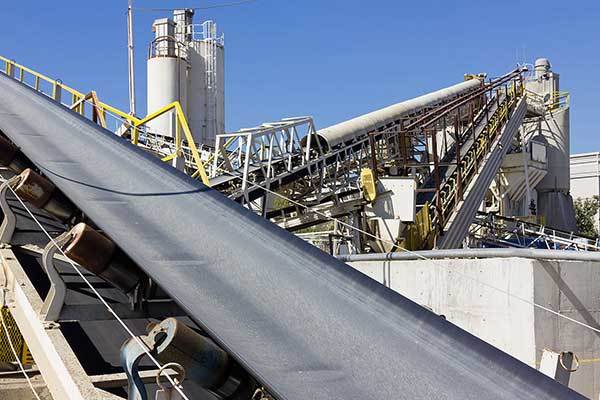Cold-Resistant Conveyor Belt Product features
Release time:
27 Mar,2025
With their unique material composition, temperature resistance, flexibility, durability, and ease of maintenance, these belts ensure that operations run smoothly and efficiently.

Cold-Resistant Conveyor Belt Product Features
In industries where low temperatures are prevalent, the choice of materials and equipment becomes crucial for maintaining efficiency and safety. One of the most significant components in these operations is the conveyor belt, specifically designed to withstand cold environments. Cold-resistant conveyor belts are engineered to perform optimally in frigid conditions, ensuring that operations run smoothly without interruptions. This article will delve into the essential features of cold-resistant conveyor belts, highlighting their significance in various applications.
**Material Composition**
One of the defining characteristics of cold-resistant conveyor belts is their unique material composition. Typically made from synthetic rubber compounds, these belts are designed to retain flexibility and strength even at low temperatures. The materials used in these belts often include EPDM (Ethylene Propylene Diene Monomer) and other rubber formulations that are resistant to cold-induced brittleness.
These materials not only withstand freezing temperatures but also exhibit excellent resistance to aging and ozone degradation. This ensures that the conveyor belts maintain their integrity and performance over extended periods, making them a reliable choice for industries such as mining, food processing, and logistics, where cold environments are common.
**Temperature Resistance**
Cold-resistant conveyor belts are specifically rated for use in low-temperature environments. Depending on the manufacturer, these belts can typically operate effectively in temperatures as low as -40°C (-40°F) or even lower. This capability is crucial for industries that require transportation of goods in refrigerated or sub-zero conditions.
The ability to function in extreme temperatures without losing performance ensures that the flow of materials remains uninterrupted, which is vital for production efficiency. Furthermore, the cold-resistant properties help prevent issues such as belt cracking or delamination, which can lead to costly downtime and repairs.
**Flexibility and Durability**
Another significant feature of cold-resistant conveyor belts is their enhanced flexibility. Unlike standard conveyor belts that may become stiff and difficult to maneuver in cold conditions, cold-resistant belts maintain their pliability. This flexibility allows them to navigate through tight spaces and around pulleys without compromising their structural integrity.
In addition to flexibility, these belts are designed for durability. They are often reinforced with multiple layers of fabric, which provides added strength and resistance to wear and tear. This durability is essential in environments where heavy loads are transported, as it minimizes the risk of belt failure and extends the overall lifespan of the equipment.
**Resistance to Abrasion and Impact**
Cold-resistant conveyor belts are engineered to withstand not only low temperatures but also the physical challenges posed by abrasive materials and impacts. In industries such as mining or construction, materials being transported can be rough and sharp, which can quickly wear down standard conveyor belts.
To combat this, cold-resistant belts often feature a high-abrasion-resistant cover. This cover is designed to protect the belt from the wear caused by the movement of materials, ensuring that it remains functional for longer periods. Additionally, these belts are designed to absorb shocks and impacts, reducing the risk of damage during operation.
**Low Noise Operation**
In many industrial settings, noise pollution is a significant concern. Cold-resistant conveyor belts are often designed to operate quietly, which is a notable advantage in environments where noise levels need to be minimized. The combination of flexible materials and specific design features helps reduce the noise generated during operation, creating a more pleasant working environment for employees.
**Ease of Maintenance**
Maintenance is a critical aspect of conveyor belt operations. Cold-resistant conveyor belts are typically designed for ease of maintenance, which can significantly reduce downtime. Many of these belts come with features that allow for quick inspection and repairs, ensuring that any issues can be addressed promptly.
Moreover, the materials used in cold-resistant belts are often chosen for their resistance to dirt and contaminants, which helps maintain cleanliness and reduces the frequency of maintenance required. This efficiency is particularly beneficial in food processing industries, where hygiene is paramount.
**Applications in Various Industries**
Cold-resistant conveyor belts find applications across a wide range of industries. In the food processing sector, these belts are essential for transporting perishable goods through refrigerated areas. Their ability to maintain performance in low temperatures ensures that products remain fresh and safe for consumption.
In mining and mineral processing, cold-resistant belts are used to transport ores and minerals from extraction sites to processing facilities. The durability and flexibility of these belts make them ideal for handling heavy loads and navigating through challenging terrains.
Additionally, logistics and warehousing operations often rely on cold-resistant conveyor belts for efficient movement of goods in cold storage facilities. Their resistance to wear and tear ensures that these systems remain operational, contributing to overall productivity.
**Conclusion**
Cold-resistant conveyor belts are vital components in various industries that operate in low-temperature environments. With their unique material composition, temperature resistance, flexibility, durability, and ease of maintenance, these belts ensure that operations run smoothly and efficiently. As industries continue to evolve and expand, the importance of specialized equipment like cold-resistant conveyor belts will only grow, underscoring the need for businesses to invest in high-quality solutions tailored to their specific operational requirements.
SEO:
Next
Related News
CONTACT US

Liutuodian Village, Boye County, Baoding City China.
Business Address
Gengzhuang Industrial Park, Shenze County, Shijiazhuang, Hebei, China
YOU CAN EMAIL US
PLEASE TELL US WHAT YOU NEED
Our engineers will contact you within 12 hours and provide free proposal and quotation.
